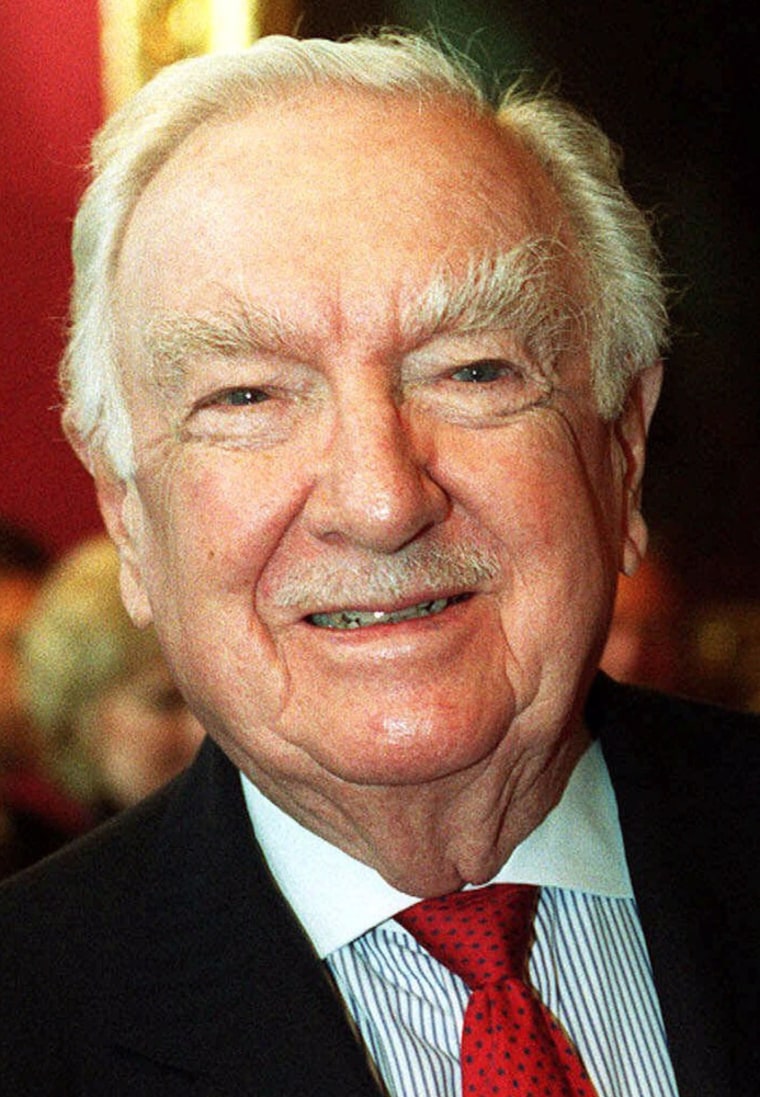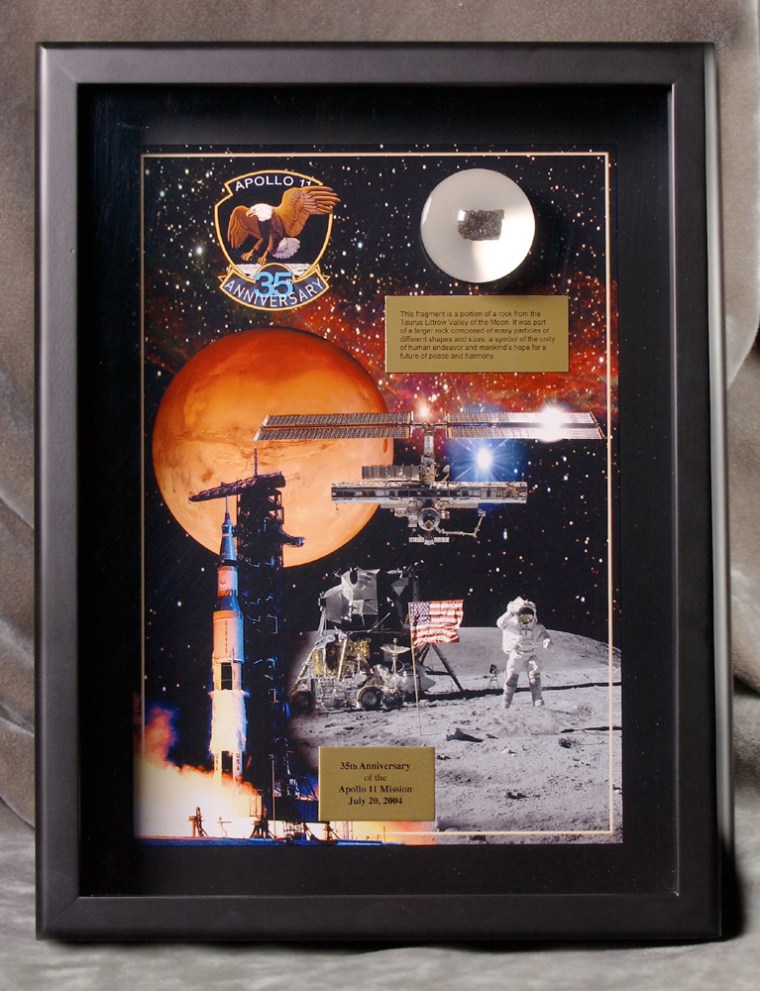NASA will present token moon rock samples to the crews from its historic Mercury, Gemini and Apollo programs -- and to one non-astronaut: legendary journalist Walter Cronkite. The men will be honored at a ceremony at the National Air and Space museum next Tuesday celebrating the 35th anniversary of the first manned landing on the moon.
The honorees will be dubbed “Ambassadors of Exploration,” a new designation NASA created for the occasion.
Between 1961 and 1973, 34 men took part in missions on Mercury, Gemini and Apollo space vehicles; 25 of them are still alive.
"These awards are a fitting tribute and serve to remind each of us that great things can be achieved when we focus our energies and our resources on a specific goal," NASA chief Sean O’Keefe will say at the event, according to a prepared statement. "In January, President Bush charged us to carry humanity forward into the universe, to gain a new foothold on the moon, and to prepare for new journeys to worlds beyond our own. Each of us can be an Ambassador of Exploration and help secure America's preeminence in science and technology by supporting the vision for space exploration."
As ambassadors, NASA expects the recipients to help communicate the benefits and excitement of space exploration, inspire a new generation of explorers and explain to the public why continuing the program (“the investment in our future,” in NASA’s words) is vital to the security and vitality of America.

Cronkite is being recognized for his work as a television journalist covering the moon missions.
“Millions of Americans experienced the drama and excitement of NASA's early years through the knowledgeable reports of Cronkite,” NASA spokesman Bob Jacobs told MSNBC.com.
“During the Apollo 11 mission, Cronkite was on the air for 27 of the 30 hours it took for the Apollo 11 astronauts to complete their mission on the lunar surface,” Jacobs noted.
The moon samples will be mounted on plaques, but because there wasn't time to produce one for each honoree, only a sample plaque will be displayed at the ceremony on Tuesday.
An inset panel bears a words reflecting the symbolism of the anniversary commemoration: "This fragment is a portion of a rock from the Taurus Littrow Valley of the Moon. It was part of a larger rock composed of many particles of different shapes and sizes, a symbol of the unity of human endeavor and mankind's hope for a future of peace and harmony." Taurus Littrow was the landing site for Apollo-17, the last Apollo lunar mission.
Other plaques may be different; Jacobs said the lunar samples will vary and the details were still being worked out.
Recipients can't keep the rocks
The lunar samples presented will remain the property of NASA. However, the honorees or their families will select in coordination with NASA a museum or some other educational institution where the awards will be on display in their name.
Federal law forbids private ownership of lunar material brought back from NASA’s moon missions. Six Apollo crews landed on the moon between 1969 and 1972 and retrieved about 840 pounds of rock and dust.
Recent thefts of lunar samples from the Johnson Space Center in Houston and from displays of donated samples in other nations has brought new attention to the question of private ownership and commercial value of such material.
Small amounts of moon dirt retrieved by Soviet robot space probes have been sold at auction, and meteorites that were blasted off the moon by impacts are also commercially available.
In addition, several hundred sticky-tape swaths of lunar dust, retrieved by space workers from Apollo spacesuits and from the bottoms of returned sample boxes, are also believed to be in private hands.
In recent years, NASA had stepped in to confiscate such material when it appeared on the open market. But the courts have decided that NASA ownership of the dust is uncertain, and no prosecutions have succeeded. Several such sample packs have already been auctioned without incident, bringing prices in the six figures.
The presentation ceremony was organized in great haste, according to sources. Although it was based on a proposal developed by Apollo-11 veteran Buzz Aldrin, msnbc.com has been told that the concept has significantly evolved from those original suggestions.
The 35th anniversary event can be seen live on NASA Television and on NASA's Internet homepage at www.nasa.gov beginning at 7:30 p.m. EDT, July 20.
